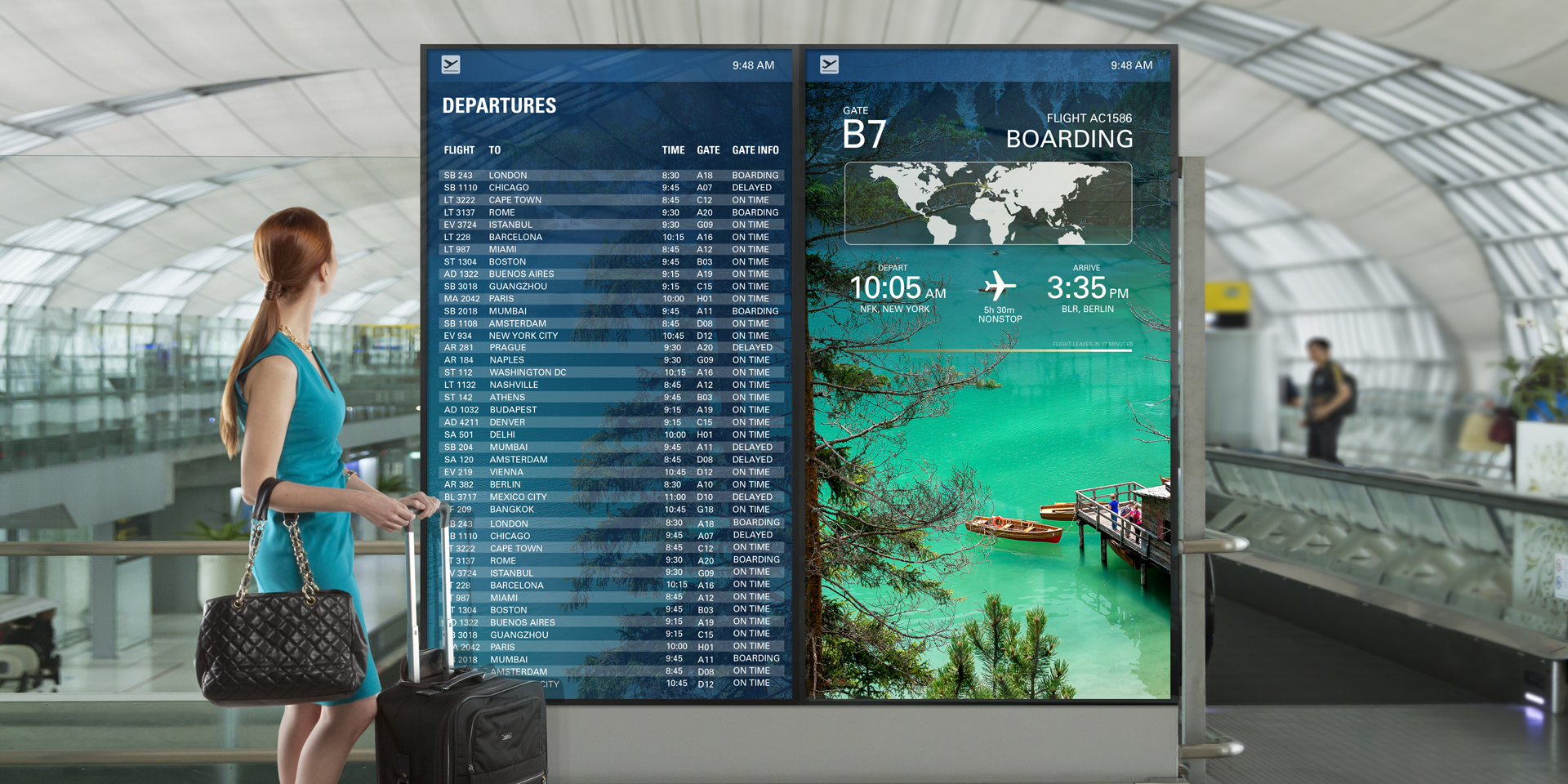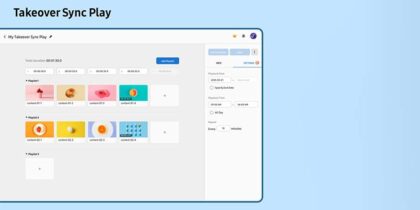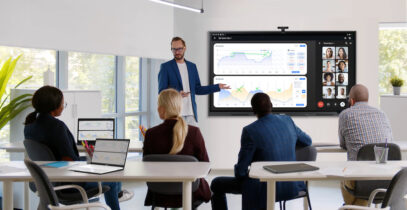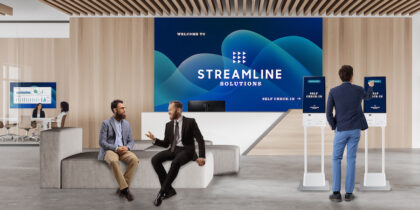If you’ve ever crowded around a co-worker’s laptop, you know that it’s not an ideal way to collaborate — and, in fact, often makes collaboration much harder. This is significant, as research shows about 75% of employees rate teamwork as being very important, and 86% of employees in leadership positions blame the lack of it as the top reason for workplace failures. As such, it makes sense for businesses dependent on collaboration to embrace a tool that offers a vast, visual and adaptive canvas for working meetings: an interactive board for the office.
Samsung is once again changing how collaboration takes place everywhere from the boardroom to the classroom with the Interactive Display. Available in 65- and 75-inch models, the Samsung Interactive Display can be wall-mounted to become a meeting room’s focal point. More importantly, it enables successful collaboration.
Some of that is due to the dynamic presentation of material. Ninety percent of the information transmitted to the brain is visual, and people are most wired to retain and absorb visual data. Thus, a big display for showing and sharing can help an organization get the most out of its team members. Its interconnectivity also makes this equally true for those in the room — and those working remotely.
Respecting busy people
The intent behind collaborative technologies reflects heavy research by Samsung on how people meet, learn and share. Three years of interviews and behavioral studies involving approximately 700 people working in different industries revealed how people were keen to use collaboration tools, but they wanted simple, familiar tools that required little or no training.
They also said they wanted to bring and use their own devices in meetings; share and use files on larger screens; and capture, distribute and archive the outcomes and recaps from productive sessions.
The Samsung Interactive Display provides the technology to accomplish these goals, thanks to the large-scale display canvas that enables idea sharing, document reviewing and project presentations to large teams. That means there’s no need to huddle around a monitor when a project’s work fills much of the meeting room’s wall.
Digital signage content management made easy
Get your complete guide to configuring and tailoring real-time messaging using an integrated CMS. Download Now
Product highlights
The Samsung Interactive Display carries forward all the great, intuitive features of other Samsung interactive whiteboards and adds some new capabilities. Here are the highlights:
- Touch for 20: Highly responsive, intuitive touch has always been fundamental to digital whiteboards, but the big working canvas of the Samsung Interactive Display allows as many as 20 concurrent points of touch. It’s the perfect meeting room smart board, as this feature makes group brainstorming and idea mapping a breeze.
- Device-friendly: As an Android 11 OS-based product, the Samsung Interactive Display provides intuitive usability and compatibility with Apple iOS, Microsoft Windows and other operating systems. In addition, the display has multiple options for connectivity, including three HDMI and five USB connections. An HDMI output port also allows for video collaboration via a video capture card. Screens can be mirrored wirelessly on up to nine devices simultaneously.
- Creative license: A stylus allows easy and flexible note-taking and drawing options. Users can effortlessly switch between the front pen and back highlighter without needing to change the settings or interrupt their flow.
- Easy edits: Users can easily select, move, crop, capture and edit images right on the screen. That takes in common office applications, such as Word, Excel, PowerPoint and Adobe PDF files, thanks to installed document viewers.
- Web-ready: Browser support means web pages can be accessed, displayed and annotated directly on the Samsung Interactive Display, without needing an external PC or other device.
- Multiple user profiles: Multi-user profiles are helpful for shared huddle spaces where users are frequently leveraging specific tools for collaboration. This feature can automatically sign you in and out of cloud drive accounts, such as Google and OneDrive.
- Remote work-friendly: Wi-Fi and streaming capabilities enable collaboration for teams in separate company offices or staffers working remotely. Directly from a Samsung Interactive Display, users can email files, save them to a network storage drive or USB, or print them. Users can easily take screenshots of notes and content and share them with colleagues. It’s also simple to collaborate using Microsoft Teams on a smart board.
Always on the job
Not every meeting needs an interactive session or digital presentation, but that doesn’t mean the Samsung Interactive Display sits idle. Its screensaver mode has a library of templates that operators can use to turn the screen into a digital sign when not in active use. Users can post important company messages, calendars, announcements and news.
That goes for security, too. The device’s underlying technology ensures that all work developed, files produced and items accessed remain secure. IT and operations can easily safeguard sensitive content, lock the display or remove critical content from view. They can also configure the display to delete files regularly.
Samsung Device Management Solution also makes it easy for IT to engage the Interactive Display from afar in many ways, be it to power the display on and off, change pin codes, lock the network or USB port or adjust proxy server settings. They can also update firmware over the wide area network without the time loss and costs of on-site updates and servicing.
Collaboration is key for many businesses, and the Samsung Interactive Display is a powerhouse tool for generating ideas, sharing insights and reviewing plans.
Learn more about how collaborative digital signage tools in the office setting promote teamwork and how you can further level up conference room technology.








